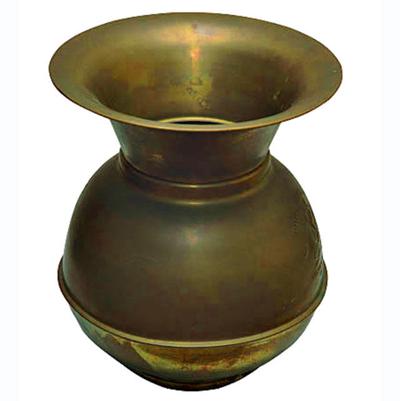Mr. Smith, an Arcadia News reader, asked if we could evaluate his rather large collection of over 300 spittoons, which is most likely one of the largest such collections in the country.
Of course, we can! Everything has a value, and some things, like spittoons, have an interesting history attached.
Chewing tobacco use was commonplace in the 19th century. It was customary for people to spit their excess saliva and tobacco juice onto the floor or street. Spittoons, also known as cuspidors, were introduced in the late 19th century, to improve public health and manners. In fact, a common sign seen in public places in the early 20th century read “If you expect to rate as a gentleman, do not expectorate on the floor.”
Spittoons were made for men, women and businesses. They were designed to be short and wide, with flat, often weighted bottoms, to sit on the floor and not be easily toppled. They were often hourglass-shaped with a flared opening, so they could – catch as much as possible without spilling, and so they could easily be emptied, rinsed and reused. Some were small and made of glass, to be held by the lady of the house. They were ubiquitous in homes, hotels, banks, saloons and trains, often with the name or logo of the business stamped into the spittoon itself.
Most spittoons were made of brass, though other materials used included iron, graniteware, stoneware, glass and fine porcelain, depending on their intended placement.
Some ladies spittoons and those intended for higher-class hotels could be rather ornate or delicate.
In the early 20th century, as chewing gum became a more popular trend and cigarettes were considered a more hygienic way to consume tobacco, spittoons suffered a great decline in popularity. They had virtually disappeared from public places by the early 1930s, and many of the original brass spittoons were melted down in the scrap metal drives during WWII, thus making them rare today. Though spittoons are no longer acceptably used in public, they can still be found in public places. In a nod to tradition, the U.S. Senate still has spittoons distributed about the Senate floor, and each member of the U.S. Supreme Court has one (though used for trash) near their seat in the courtroom.
So, what are they worth today? It depends on rarity, material and maker. Reproductions of old brass spittoons have minimal value, usually less than $30. Older ones such as graniteware spittoons average around $100; jar spittoons (with lids) for tuberculosis sufferers are rarer, and can sell for around $150. A signed Red Wing stoneware spittoon in mint condition can fetch $1,000 or more. Most common spittoons, however, range in value between $30 and $100.
So, your answer, Mr. Smith, is you might have a few in your collection that have considerable value!
Do you have a question? Send it to editor@arcadianews.com. We look forward to hearing from you.


